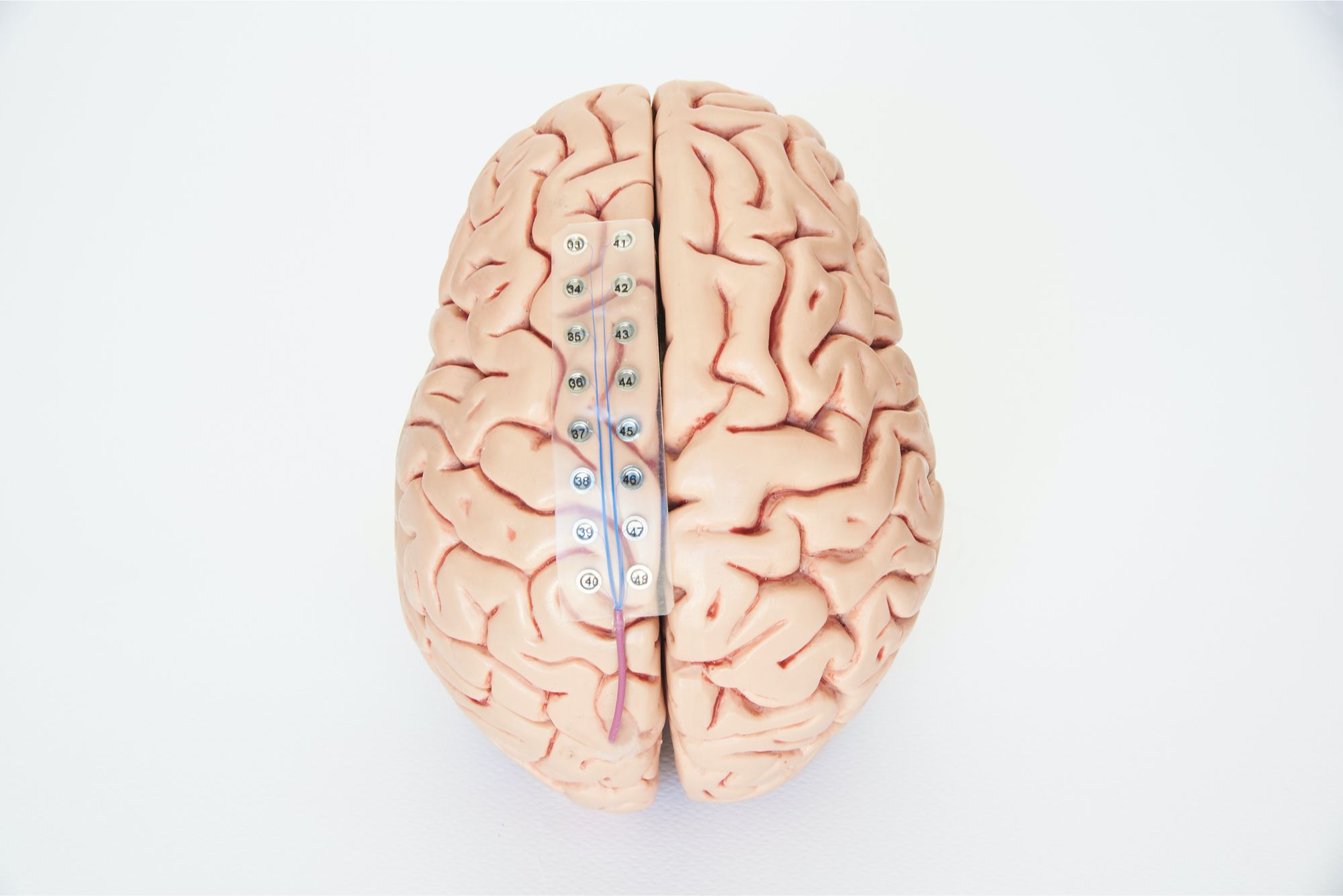The brain-machine interface (ICM) is a promising set of tools for restoring communication in people who have lost the ability to speak or move. It is a direct link system between the patient’s brain and the computer. This unfiltered connection is intended to allow a disabled individual to perform various tasks without any action from the peripheral nerves or muscles. Intellectual control that can be applied to the exoskeletons of any robotic system designed for this purpose. Recently, researchers from Stanford University They present the latest results from the use of cortical implants that allow writing without arms or hands on a computer screen. They declared an accuracy of close to 94%…
Helmet with brain electrodes placed on a model. Credits: Elena Pavlovich.
Brain-machine interface via intracortical implant
The concept of ICM dates back to 1973. Since then, technologies have improved but the structure has remained the same. First, the interface requires a system to acquire and process the patient’s brain signals. Then, a second system is used to classify this data before it is translated into commands understood by the connected machine: typing, moving a wheelchair, etc. There are three ways to record a paralyzed person’s brain activity. The first is placing a tissue helmet with countless electrodes on the participant’s skull. In this case, the measurement exploits the electrical signals of the EEG. The spatial resolution and duration of this method are certainly limited, but it has the advantage of being non-invasive and easy to use. The second, semi-surgical method is based on fusing a network of electrodes just below the dura – the membrane under the skull that surrounds the brain. This time the solution is better, but the risks of complications due to surgery may arise.
The final option is the one the study researchers used: intracortical implantation. Invasive, as its name suggests, placed directly into the patient’s cortex. Results: Very high spatial resolution, unfortunately combined with a high risk of complications. In addition, the bioincompatibility of the instrument leads to a defensive reaction from adjacent tissues, which leads to long-term signal loss. In the case presented by scientists at Stanford University, the implant correctly decoded handwriting movements generated by the activity of neurons in the motor cortex of a patient — a person whose hand had been paralyzed as a result of a spinal injury. The text translation worked as expected, with nearly 94% accuracy! In real time, the patient reached a typing speed of 90 characters per minute. A result roughly equivalent to that of a person of the same age using a smartphone (about 115 characters per minute).
A subdural electrode grid on an artificial cerebral cortex. credit: shutterstock
Technological and Ethical Challenges
But how is this feat implemented in practice? The user concentrates, trying to imagine himself performing the movement. A characteristic brain activity is then generated, which can be measured by specific sensors. The signals are sent to a computer that takes on the task of analyzing and then extracting useful data for the rest of the process. It is then translated into machine-readable commands. It may seem simple on paper, but in reality it is not. At the patient level, the operation of the interface is not self-explanatory and real training with a phase of adaptation and learning for an extended period or less is required before a certain mastery of the machine is achieved. The study participant’s achievement is thus impressive because it shows a true understanding of the process.
However, the challenges are many. Because in order to advance, researchers will have to improve their understanding of neural networks and their computer’s ability to analyze incoming data. Not forgetting to design the electrodes that are thinner but also more resistant. as he remembers Report 20-06 – Brain-machine interfaces: experiences of medical applications, technology and ethical issues In the Bulletin of the National Academy of Medicine, there is still a way between these impressive but highly experimental results and treatments available to the largest number of people. With the arrival of private funds such as no start Neuralink FTablet 4 years ago by Elon MuskWith whom these researchers collaborate, the means applied in the development of these technological tools are multiplied tenfold! What we hope to get real help soon for people with disabilities. The point to watch though would be a matter of ethics. In fact, interfering with the electrical signals of a person’s brain is no small feat. In addition, it is the duty of the clinician to ensure that his patient is able to make a decision, so that the advantage represented by the ICM is not a source of limitation for the main patient.

“Certified gamer. Problem solver. Internet enthusiast. Twitter scholar. Infuriatingly humble alcohol geek. Tv guru.”







